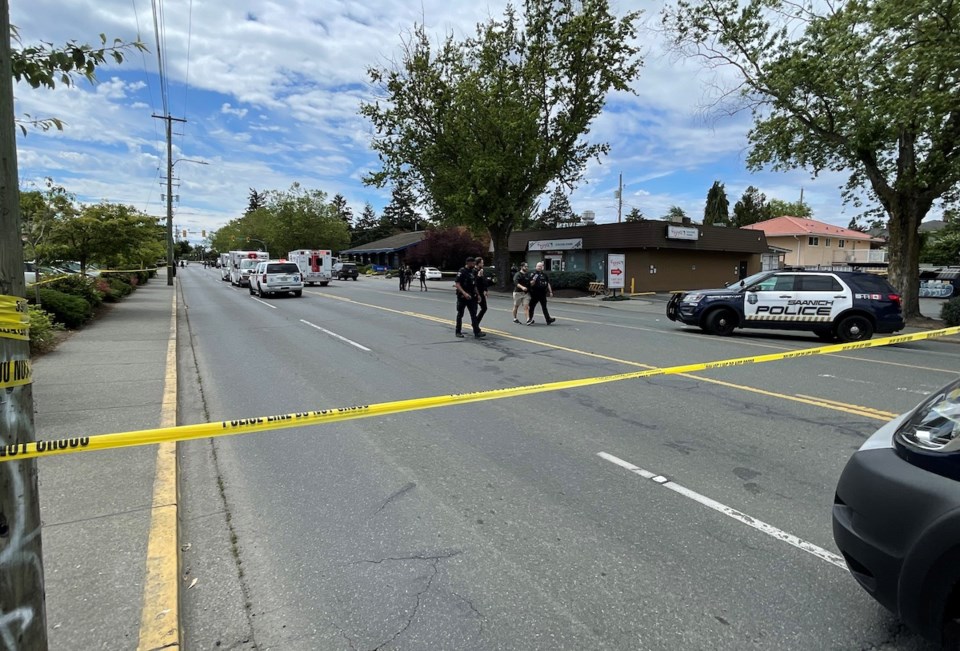Organized bank robberies are becoming less common in Canada because they are not lucrative now that little cash is on hand because so many financial transactions happen online, says a Simon Fraser University criminologist.
Robert Gordon was commenting on Tuesday’s bank robbery and shootout at the Bank of Montreal branch on Shelbourne Street in Saanich, which ended with six officers taken to hospital and two suspects dead.
“Bank robberies of this kind are getting rarer and rarer in Canada. That’s because the pickings are not that good,” Gordon said.
These days, bank work involves online or virtual banking, he said.
“Everything is transferred electronically.”
In the late morning Tuesday, two robbers went into the BMO branch, where about 20 customers and staff were present.
One customer who was inside the bank said there was an explosion before a man with an assault rifle entered the building.
Everyone hit the floor; they were later moved to the back of the building.
Gordon said one type of robbery will see someone walk into the bank, point a gun at tellers, tell customers, “Hands up. Part with all your valuables. We are here for the money.” And they dash in, do that, catch everybody by surprise, terrorize them into parting with their possessions and then leave just as quickly as they arrive.”
The villains hope that people are so surprised that they do not call for help quickly enough.
Then there is what Gordon calls the “drop-in bank robber” — someone who has heard he can get quick cash if a teller is threatened with a gun or knife. It could be someone who is engaging in crime to survive, he said.
In such cases, a teller will part with money in the till. Banks tell staff that their lives are worth more than the money and to hand it over, he said.
Tellers do not have access to much money, he said.
Far less common is a highly organized robbery by a gang of thieves, maybe carried out over a long weekend.
The famous Baker Street robbery in London in 1971 falls into that category. Tunnels were drilled into the floor of the vault of Lloyd’s Bank where the thieves broke into safety deposit boxes.
Gordon said he’s mystified by what motivated the Saanich bank robbers. “I have no idea what they thought they would be doing in a BMO branch office in a suburb of Victoria. That’s the big question for me. What were they going after?”
The main reason is normally getting cash, unless there was something else in safety deposit boxes, but that seems unlikely, Gordon said.
“These guys go in and they knock over a vault for money, not for pleasure.”
The customer who was trapped in the bank said she had been hiding near the safety deposit boxes and that the armed man had said “vault” to the bank manager.
Taking jewelry from safety deposit boxes means they have to sell it and it can be difficult to move, Gordon said.
Police also found explosives. Gordon figures the explosives were on hand in case they were needed to blow off the hinges of a cage protecting an area of the bank.
There’s no point in using explosives on vault doors, because these days, they are designed to lock down if explosives are set off, he said.
>>> To comment on this article, write a letter to the editor: [email protected]



